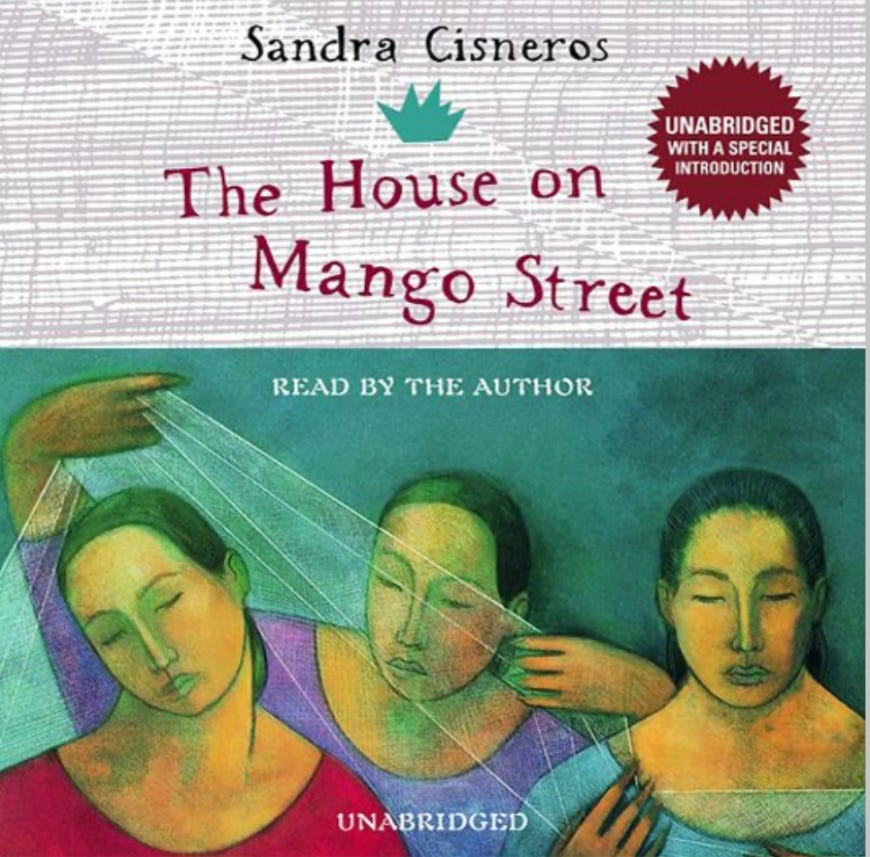Yes, there’s already another one! That’s because this one is only two hours long, including the special introduction by Cisneros herself. That introduction is important, because she talks about looking around in graduate school and seeing herself… nowhere. No one was writing in a voice that sounded like hers. She wasn’t reading anything in a voice like hers. (She does acknowledge a few writers who were doing this but who weren’t on her radar.) So she decided to write it herself.
It matters that this book was groundbreaking when it was published, in 1984, because it now sounds familiar to me. It has had a huge influence.
The House on Mango Street tells the story of Esperanza Cordero in a series of short vignettes as she moves from childhood to adolescence. First, Esperanza tells us that she hates her new house in an impoverished neighborhood in Chicago, because it is not what she pictured when she imagined her family in their very own home. Rather than a white house on a hill with lots of trees, this one is crumbling red brick. It is an improvement over the apartments they rented before—it just isn’t what she dreamed of. But Mango Street forms a community that actually reminds me a little of the neighborhood in A Tree Grows in Brooklyn. Esperanza describes the various people who live there, her school, her changing friendships, and most of all, her wishes for the future. She wants to “get out” but she also plans on coming back and lifting up those she will leave behind.
The structure of this novella is key, because it represents the thoughts of the girl at its center, the thoughts of a maturing child. It’s hard to pin down the structure of this one, actually, because at times it feels more like poetry. It’s an immersive experience, rather than a linear story. Esperanza can flit through an idea in a few paragraphs, or she can spend a long time relating a discussion about what it might mean to develop wider hips. Even the language used in the vignettes changes subtly as she grows up, little by little. We get more of her dreams for the future as things progress. I am amazed at everything that Cisneros can accomplish with so few words. It’s a masterpiece.
She somehow makes readers feel Esperanza’s experiences in our very bodies. We can feel the “heavy,” brown, practical shoes that she gets every year, and the way they contrast with a special new outfit, one that swishes and swirls on the dance floor. Even when she is vague about details, appropriately, regarding a traumatic experience, it’s easy to feel the discomfort and trauma her body is going through. In other sections, the reader is brought back to a child’s visceral fear of adults who have power over us. In a favorite vignette of mine, I can hear the jump ropes hit the sidewalk as the girls play double Dutch and feel my feet hitting the ground.
I really enjoyed this very important little book! I’m so impressed with the way it crosses cultural and socioeconomic divides. I love the way the neighborhood comes alive. I think I will have to read a paper copy at some point, to see the poetry on the page, even though listening to the author reading it herself was a great experience.




